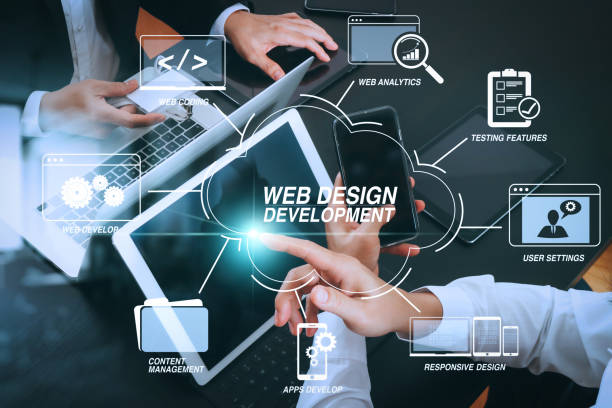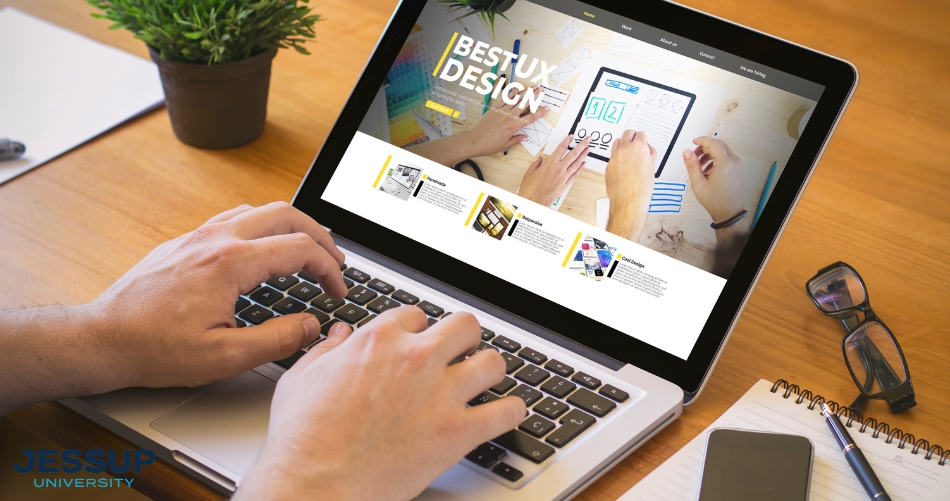Aligned Position Web Design: Comprehensive Web Design Solutions for Small and Large Businesses
Aligned Position Web Design: Comprehensive Web Design Solutions for Small and Large Businesses
Blog Article
The Very Best Kinds of Web Layout to Enhance User Experience and Engagement
In the ever-evolving landscape of electronic interaction, the efficiency of Web design substantially affects customer experience and engagement. Different design approaches, such as minimal, receptive, and interactive formats, each deal one-of-a-kind benefits that can satisfy varied customer needs. Understanding which kinds of Web style best offer these objectives can be essential for organizations aiming to boost client contentment and retention. Nonetheless, the concern continues to be: which style elements genuinely resonate with users and foster purposeful interaction? The exploration of these principles reveals essential insights that might redefine your approach to website design.
Minimal Web Style
As electronic landscapes end up being increasingly cluttered, minimal Web style has become a powerful method to enhancing user experience. This style viewpoint focuses on simpleness, concentrating on crucial elements while eliminating unnecessary interruptions. By using enough white room, simple navigating, and a restricted shade combination, minimal style promotes clarity and guides individual attention to essential material.
The core concept of minimalist Web style is to produce a smooth interaction for individuals. By minimizing cognitive load, users can quickly comprehend info without really feeling bewildered. This direct approach not only enhances usability however also encourages interaction, as visitors are more probable to check out a site that is visually attractive and easy to navigate.
Furthermore, minimalist design frequently emphasizes typography and images, utilizing these elements purposefully to share messages effectively. In essence, minimalist Web design is not just a fad; it is a thoughtful method that identifies the importance of user-centered design.
Receptive Website Design
In today's varied digital atmosphere, receptive Web design has actually become essential for developing a seamless individual experience across a multitude of devices. As users access sites on smart devices, tablets, desktops, and laptop computers, the capability of an internet site to adjust its format and content to different display dimensions and resolutions is vital.
Receptive Web style employs flexible grids, pictures, and CSS media inquiries to make sure that Web content is presented ideally, no matter the tool used. This technique not just improves the visual charm of a site but additionally significantly enhances usability. Users are more most likely to engage with a website that uses a consistent experience, as it gets rid of the frustration of having to zoom in or scroll excessively.
By embracing responsive design, services can improve their visibility and get to a broader target market. In recap, receptive Web layout is a fundamental practice that boosts individual experience, engagement, and total contentment.
Interactive Website Design
Responsive Web design prepares for boosting customer experience, but interactive website design takes this an action further by involving individuals in an extra vibrant method - Aligned Position Web Design. By integrating elements such as animations, clickable prototypes, and real-time comments, interactive Web style captivates customers, attracting them right into a richer surfing experience
This technique not only promotes involvement but likewise encourages individuals to discover material actively instead of passively eating it. Strategies such as gamification, where individuals earn incentives for completing tasks, can substantially boost the moment invested in a site and boost general satisfaction. Interactive attributes can streamline complex info, making click site it extra absorbable and pleasurable.

Integrating interactive style aspects can additionally cause higher conversion prices, as customers are more probable to involve with a website that actively includes them. Aligned Position Web Design. Ultimately, interactive website design transforms customer experiences right into memorable trips, making certain that site visitors return time after time
Flat Design
Characterized by its minimalistic approach, level design stresses simplicity and functionality, removing unnecessary elements and concentrating on necessary attributes. This style approach focuses on use, making sure that individuals can browse user interfaces easily and efficiency. By utilizing a clean visual, level layout gets rid of the clutter frequently discovered in more luxuriant designs, therefore improving individual focus on material and performance.
The trademark of level layout depends on its usage of strong shades, straightforward typography, and geometric shapes. These components add to an aesthetically appealing user interface that is both friendly and modern. In addition, flat layout cultivates a feeling of clarity, enabling customers to discern essential actions and information without distraction.
Additionally, level style is especially effective in responsive Web style, as its simplicity equates well across different gadgets and screen sizes. The absence of intricate structures and gradients lessens loading times, which is critical for keeping user involvement. As digital landscapes proceed to advance, level layout stays a pertinent option for producing straightforward web sites that enhance general experience. By concentrating on crucial attributes, flat layout not only fulfills customer demands however also encourages seamless communication, making it an essential element of effective Web style techniques.
Adaptive Web Style
Flexible website design tailors the individual experience by creating several taken care of formats tailored to different display sizes and tools. Unlike responsive layout, which fluidly adjusts a solitary layout, flexible style uses distinct formats for specific breakpoints, making sure ideal presentation on different platforms. This approach allows designers to concentrate on the browse this site distinct qualities of each device, enhancing usability by delivering specifically what individuals need based upon their context.
One of the key advantages of flexible Web design is its capability read what he said to enhance load times and efficiency. By serving customized content and images that fit the customer's gadget, internet sites can minimize information use and enhance loading rates. This is particularly advantageous for customers with slower connections or restricted information plans.

Additionally, flexible style assists in a much more consistent and controlled branding experience. Given that developers produce numerous formats, they can make certain that the aesthetic aspects align with the brand's identity throughout various systems - Aligned Position Web Design. This leads to a natural individual experience, improving involvement and promoting user retention
Verdict
In verdict, the integration of minimalist, responsive, and interactive website design principles significantly boosts individual experience and involvement. Minimalist layout cultivates quality and focus, while responsive design makes certain adaptability across different devices, promoting availability. Interactive style astounds individuals via vibrant aspects, encouraging exploration and customization. Collectively, these style approaches contribute to the development of straightforward environments that not just enhance contentment yet additionally drive higher conversion prices, underscoring their vital value in contemporary website design techniques.

Minimalist layout fosters quality and emphasis, while responsive style makes certain flexibility across numerous gadgets, promoting access. Jointly, these design approaches add to the creation of straightforward atmospheres that not only improve fulfillment however additionally drive greater conversion rates, highlighting their vital value in modern Web layout techniques.
Report this page